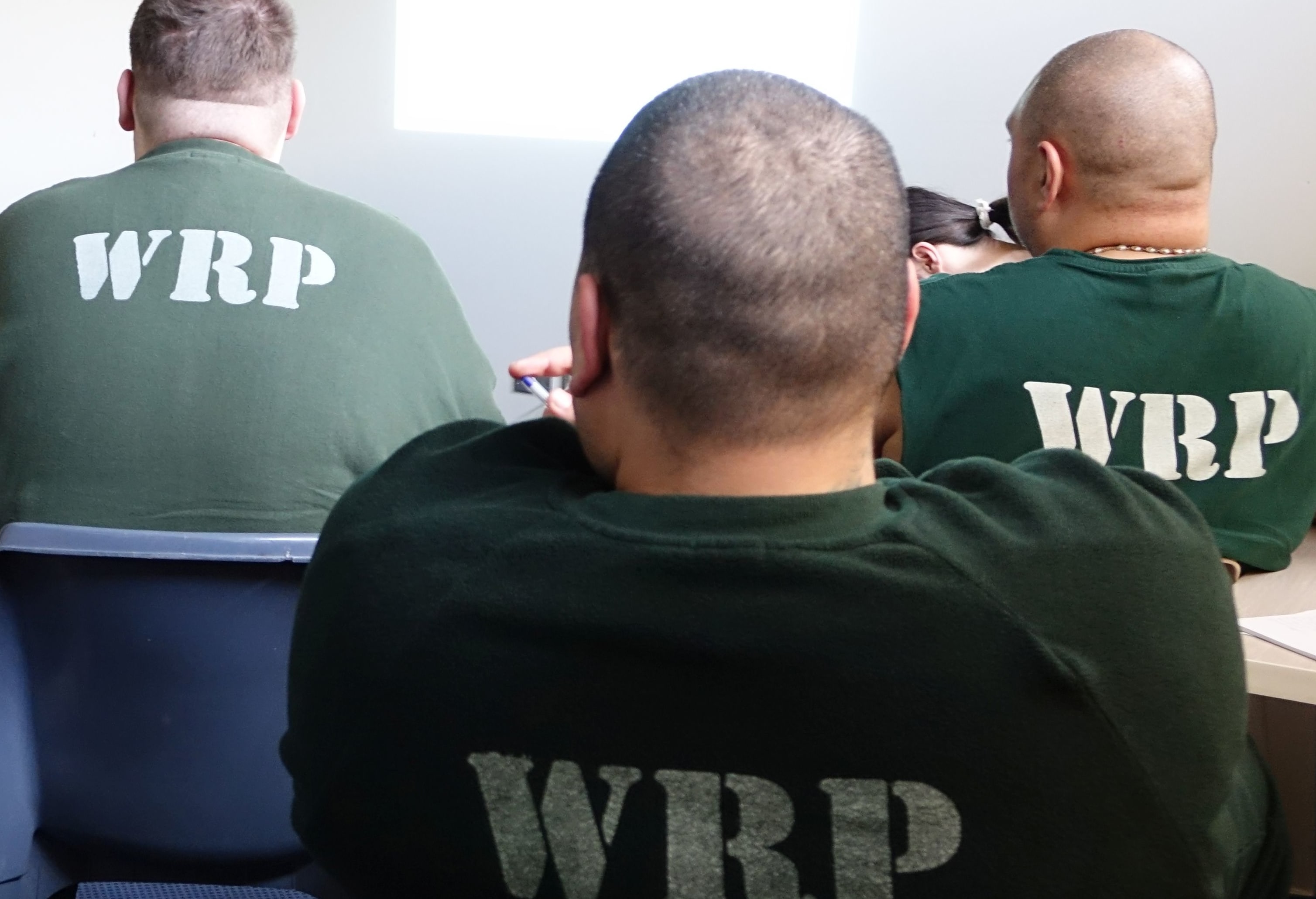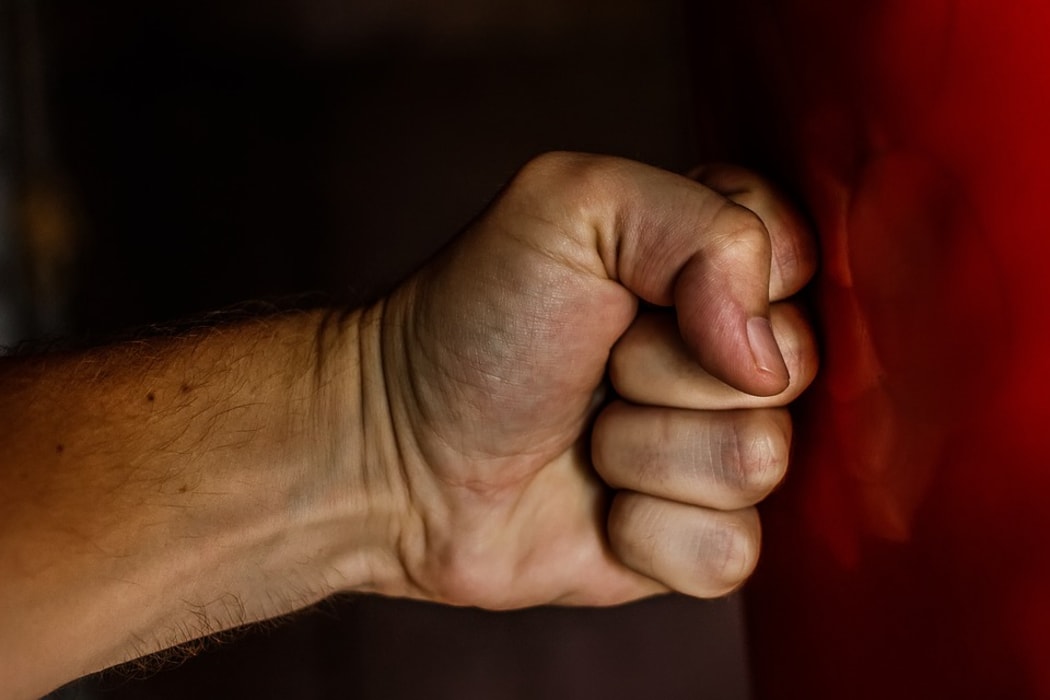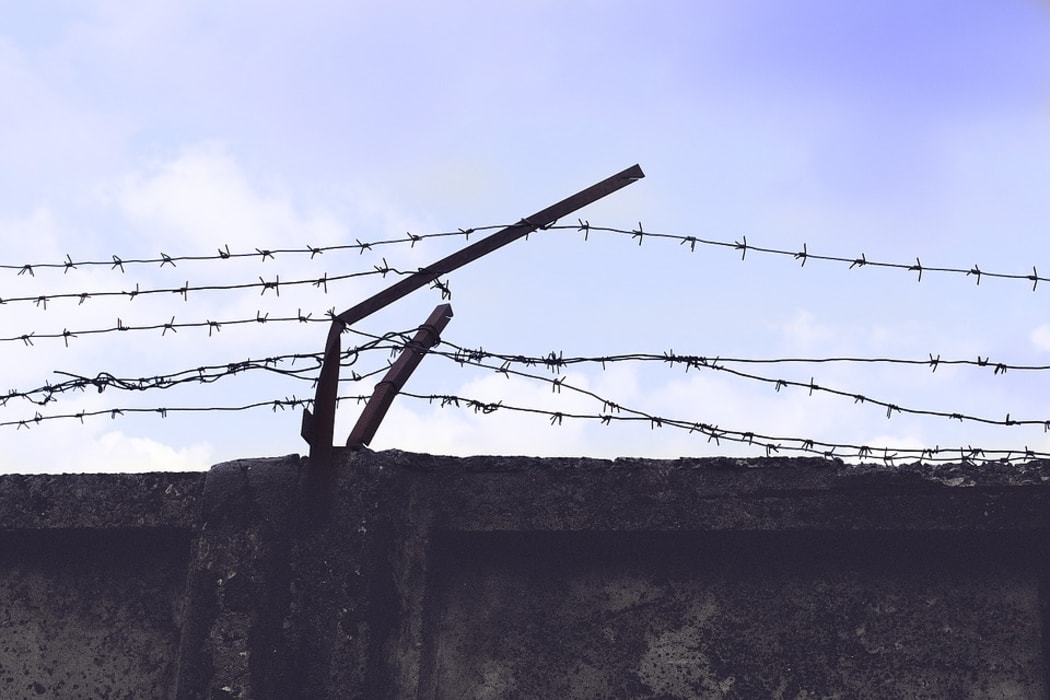A look is exchanged between two men in a local pub. It later turns to a brief verbal encounter, until a push turns into shove and a subsequent fist sends one of the men spiralling down where he’s pinned to the ground with a bottle held over his head. All because of a single look.

Photo: RNZ / Jonathan Mitchell
But for some individuals that’s all it takes: a hair-trigger moment that derives from ingrained behaviour and past conditioning, perhaps compounded by little or no coping mechanisms to regulate their own emotions.
And for men who have served long sentences behind bars the struggle to address those emotions and reactions is a challenging reality, not only inside prison, but also beyond the brick barricade and barbed wire fences.

Violence can be triggered as a coping mechanism. Photo: Public domain
In New Zealand over the past two decades, researchers and the Department of Corrections have been looking to address the needs of high risk offenders as a means to lower the rates of reconviction after the first year of release.
Probation officers are also brought into the fold to assist in the process and provide offenders with tools and support that they need in order to survive life on the outside.
“I’ve looked after a guy that had a full facial tattoo and one of the things that he had difficulty getting used to was people staring at him. He found their reaction to him difficult to take,” says James, who worked as a psychiatric nurse before his current role as a Department of Corrections probation officer.
James says other problems that people face, once they’re released back into the community, include not being used to open spaces and being confounded by the amount of noise. High-risk offenders who have served long sentences are also suddenly confronted with the decision-making process, which can be stressful.
“I think a lot of people have perceptions of what someone is like when they return to the community. But I don’t think they realise how a long period in custody affects the offender as well,” says James.
Many of the men he’s worked with have also been through the mental health sector and have little or no ability to cope with the daily stresses of employment and routine tasks that many of us take for granted.

The reality of release can be isolating. Photo: Public domain
“People in the criminal justice system are interesting and their backgrounds are more diverse than you’d expect,” says Dr Devon Polaschek, professor of criminal psychology at Victoria University of Wellington.
“But what’s also true is that they’re more likeable and … much more complex than you’d expect.”
Dr Polaschek adds that while some individuals in custody have done horrendous things, they may also have a great love of pets and love their kids and share similar concerns that we might have.
“You have to keep that whole complexity together. It’s not simply that they’re good people, because some of them are not very good people,” she says.
Her aim throughout her 22 years experience as a psychologist has been about changing behaviour patterns. She’s worked alongside Corrections on the Special Treatment Unit Rehab Programme (STURP), which assists the needs of high risk offenders and the reintegration process.
“Violence is a social behaviour, so a lot of it is mismanaged or misoriented responses to other people.”
She says that family support accounts for a great deal once a person is back in the community. The Sturp programme also assists individuals to re-establish broken family ties, looking to build positive relationships around them - all of which, will hopefully lower rates of recidivism and reconviction after the first twelve months of release.
But the process is challenging for men who have spent time looking at why they’ve behaved in a certain way, and how their actions have affected them and the lives of others.
“Most of the men coming into these programmes have 15 or 16 areas that have been identified as underpinning their violence risk,” says Dr Polaschek.
“And sure they don’t to have to change all of those things, but that gives them quite a big range of things to think about, much more than most of us would be able to manage in 8 months or a year of personal development.”
She says that in many cases behaviours have become entrenched, and individuals lack an awareness or knowledge of other alternatives. This, of course, becomes a barrier to successful reintegration.
“The thing about growing up and learning to do things in a particular way, is not only do you learn that way and become better at it, but you don’t learn any other ways. So your options for how you behave become narrower over time.”

Life isn't always easier over the barbed wire fence. Photo: Public domain
Stress is a factor that can trigger negative or antisocial behaviour, and violence can in turn become a default as a means to cope with too much stimulation. But Dr Polaschek says that it’s possible to change behaviour with a strong tunnel vision, and most importantly, the desire to want change. She also says that when it comes to adopting new behaviours and discarding unwanted ones, it’s possible to fake it till you make it.
“These are not people who typically hang in for the long haul with things, [so] I would suggest the effort to fake [good behaviour] over 8-12 months in a residential environment where there are prison officers around all the time, is quite substantial. If you make an effort to behave the way you want to be, then over time that becomes easier and it becomes a part of you.”

